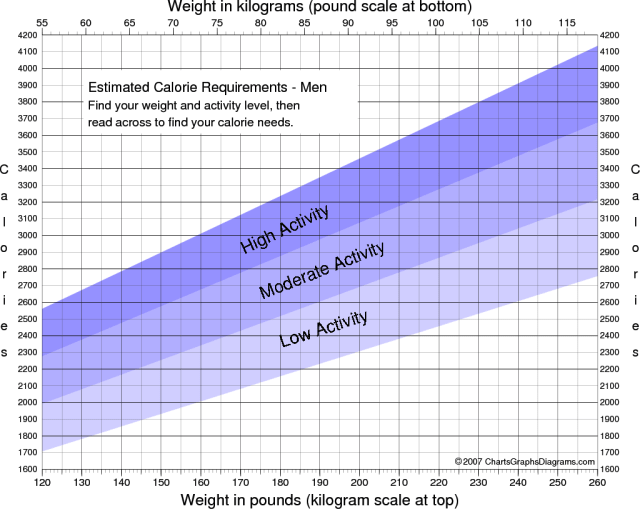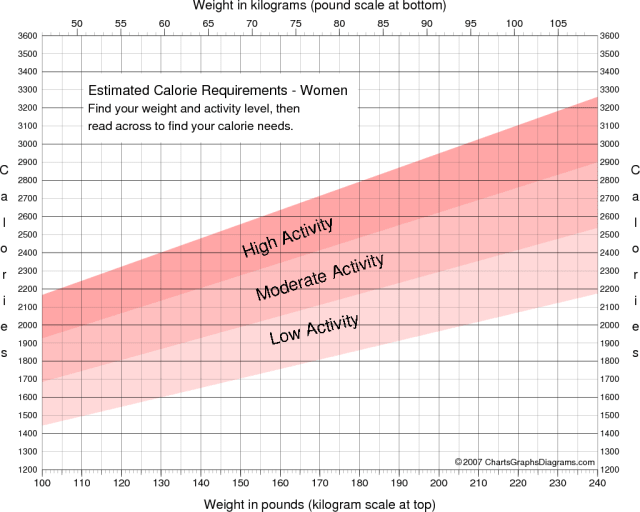In order to eat effectively for the results you want and know how many calories to bulk or cut on, being able to calculate maintenance calories accurately is essential.
Maintenance calories are the number of calories per day at which someone will neither lose nor gain weight. When eating at maintenance, the energy consumed in food is exactly equal to the energy expended daily. This means that if your maintenance calories is 2,500 cals, you are consuming and also burning off that number of calories per day.
A more sedentary lifestyle will require the body to burn less calories, lowering the maintenance needed, while an active lifestyle will demand more energy and a higher food intake. Likewise a higher BMR (basal metabolic rate) will burn calories faster allowing higher intake. A lower BMR, meaning less energy is expended by the body from natural body processes like breathing and subtle movement, will do the opposite.
Having control over calories is one of the most important things in achieving fitness goals. Typically, weightlifters cycle the amount of calories eaten per day over the course of longer training periods. One of the more common year round methods is to eat in a surplus through the winter, cut in the spring up through the end of summer, eat at maintenance in the fall, then repeat. These cycles are referred to as bulks, cuts, and maintenance.
In addition to tracking calories, it is also beneficial to count macros as well to make sure you are consuming enough protein per day and are not going too low on any one macronutrient.
There are many free to use online calculators that are able to give an estimate for maintenance calories but for a more accurate idea it is better to be able to calculate the number yourself.
If you understand how maintenance calories are calculated you’ll better be able to control how much of a caloric surplus you’re in during a bulk and how many calories you need to be in a caloric deficit when cutting. Although a few calories over or under may not seem like much of a concern, over time even 20 extra calories per day will add up.
Maintenance Calorie Estimates

This photo gives a broad maintenance calories estimate for men based on weight and activity level. In the United States, the general recommendation for daily calorie intake is 2,500 calories / day for men, ranging from 2,000-,3000 cals.

This photo gives general maintenance calories for women. The current general recommendation is 2,000 calories a day, ranging from 1,600-2,400 cals.
Although these guidelines are helpful as a quick reference, the rate at which calories are used per day can fluctuate based on several things: primarily activity level, but also BMR, and age as well as other factors, so the true maintenance for people often will vary from broad estimates since every individual is unique.
For these reasons, the exact and most accurate method to calculate maintenance calories is to do diet and activity recall.
Diet and Activity Recall
The most precise way to calculate your maintenance calories is to do diet and activity recall by recording the calories you eat and all the activity you do on a daily basis.
For activity recall, simply track all hikes, walks, and general activity outside of weightlifting for the weeks you are recording. This will allow your actual activity levels to be recorded for reference instead of being forced to try and estimate based off memory.
In addition to activity, record how many calories you eat per day and how much you weigh at the beginning of every day. Daily caloric intake and daily weight need to be taken for at least a week for accuracy but 2 weeks will give an even better idea.
An easy way to record calories every day is to use either MyPlate or MyFitnessPal. Both of these apps are free and allow you to easily scan food items while keeping track of what you’re eating each day and your macro total.
Recording your weight is relatively self-explanatory. Some scales are able to give a reading for body fat percentage and show you additional stats such as lean muscle mass and bone mass but that is not needed for simply tracking your pounds. If you do not own a scale, this scale can read your weight, body fat levels, lean mass, and bone mass and this one can read your weight (which is all that’s required for calculating maintenance calories).
Next, after recording this information for 1-2 weeks, take the average calories eaten per day and find the amount of weight gained or loss since the first day. If you are recording for two weeks, compare the average weight of week 1 with the average weight of week 2 as well as the average calories of week 1 and average calories of week 2.
Interpreting Recall
If your overall weight did not change at all, your average caloric intake is your maintenance calories. If your weight increased since the first day, your maintenance calories are lower than your average caloric intake and if your weight decreased overall then your maintenance calories are higher than your average caloric intake.
To find exactly what your maintenance calories are, converts pounds of weight gained or lost into calories. One pound of bodyweight is roughly 3,500 calories (this is average, not exact) so if you gained two pounds over the course of the tracking period, and you tracked for 2 weeks, then on average you consumed 500 calories over maintenance per day. If you gained .2 pounds after 2 weeks then you on average ate 50 calories over maintenance every day.
Maintenance calories can then be calculated by adding the average amount of calories extra or less you ate per day (weight gain or loss in lbs x 3,500 / number of days) to the average amount of calories consumed each day over the 2-week period.
To further simplify, take your weight gain in pounds after the tracking period and times that by 3,500. Then divide this number by the number of days you recorded. This is how many calories you differed from your maintenance calories each day. If this number is negative, you need to eat that number of calories more per day to be at maintenance, and if this number is positive, you need to eat that amount less each day for maintenance.
Summary
The most accurate method to calculate your maintenance calories is to do diet and activity recall.
Diet and activity recall is done by recording the calories eaten per day, recording your weight at the beginning of every day, recording your activity, and then interpreting the results after 1-2 weeks to get an accurate measure of the calories you maintain your weight at.
For more on tracking calories and eating, such as the top 7 foods for a clean bulk and how to meal prep for muscle gains, click here.







